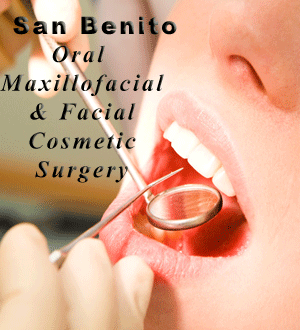Botox® Injections
Botox® is the number one cosmetic procedure in the United States, with 3.8 million treatments in 2005. Botox® was introduced in the late 1980s by ophthalmologists for treating optic muscle disorders. It was approved by the FDA for cosmetic use in 2002, helping millions of patients get rid of nagging facial lines and wrinkles.
Today, the variety of Botox® uses includes ocular muscle spasms, problems with eye coordination, severe armpit perspiration, and as an anti-wrinkle treatment for crow's feet, frown lines, and to eliminate furrows in the forehead. It is being studied to treat a laundry list of other conditions, from knee and hip osteoarthritis and temporomandibular joint disorder (TMJ) to migraine headache and benign prostatic hyperplasia (BPH).
Botox® Injections
Botox® combats wrinkles that are created when nerve cells within the muscles beneath the skin release a chemical called acetylcholine. This chemical triggers a muscle contraction that creates wrinkles. The Botox® product, medically known as Botulinum Toxin Type A, is an injectable compound that disrupts the release of acetylcholine, which essentially paralyzes the muscle and stops the contraction. Results are fully evident within one week after treatment and remain for a minimum of three months.
Botox® typically reduces wrinkles by 80 percent. Patients are typically between the ages of 35 and 60. Results vary among individual cases, and the results are temporary. You will need to plan for additional injections, depending on your long-term treatment goals.
Frown lines are the result of gathering or knitting the tissue between the eyebrows into a fold. These unattractive folds and furrows are caused by the repeated action of underlying muscles associated with facial expression. Years of squinting and frowning tend to leave deep wrinkles in the skin between the eyebrows and on the bridge of the nose, across the forehead, and at the corners of the eyes. On many people, frown lines produce an angry or sad look that detracts from a pleasant facial appearance. Dermatologic surgeons can now improve these lines without surgery and without scars by a simple injection of botulinum toxin type A, commonly known as Botox
Botulinum toxin is injected directly into the target muscle to treat vertical lines between the eyebrows and on the bridge of the nose, the squint lines or crows feet at the corners of the eyes, the forehead horizontal lines, and the platysmal muscle bands often visible on the neck, commonly known as turkey neck. It may also be used for eyebrow positioning. Once the muscle is weakened and relaxed, it cannot contract. Since there is no way to make the undesirable facial expression, the lines gradually smooth out from disuse, and new creases are prevented from forming. Other muscles like those needed to raise the eyebrows are not affected so a natural expression is maintained. Botulinum toxin may not be as effective on the smile lines around the mouth because the muscle action in this area is needed for expression and important functions like eating.
Treatment involves injection of very small amounts of botulinum toxin into the underlying muscles to immobilize them. The actual treatment is well tolerated and takes just a short time with minimal recovery. Botulinum toxin takes effect about 3 to 7 days after treatment. The improvement generally lasts about 3 to 4 months before the effect gradually fades and muscle action returns. It is anticipated that the average patient will require reinjection at various intervals. With repeated treatments, atrophy (thinning) of the muscle may occur which usually produces longer-lasting results.
Excessive sweating can be alleviated with injections of a highly diluted form of botulinum toxin directly into the underarm skin or skin on the palms and soles of the hand or foot. There it paralyzes the sweat glands of the skin which are responsible for excessive perspiration. A single treatment session can provide months of relief, and experts believe that injections can be repeated indefinitely once or twice a year to maintain dryness.
Side effects are minimal and typically relate to the local injection. Soreness or mild bruising, while uncommon, may occur around the injection site. Makeup may be worn after treatment, but care should be taken to avoid pressing or massaging the area for several hours. In rare instances, patients may develop temporary weakness of the neighboring muscles, a temporary droopy brow or eyelid, or a headache.
For more information schedule your consultation with Dr. Carr to discuss this procedure in full. Our experienced and professional office staff members are here to help you with all your questions. Call our offices at (831) 636-9808, or use our convenient contact form to request for information.
About Us
Dr. Brian Carr holds a both a Dental Degree and Medical Degree. He is a member of the the American Association of Oral and Maxillofacial Surgeons (AAOMS) and a diplomate of the American Board of Oral & Maxillofacial Surgery (ABOMS). Dr Carr is an Associate Clinical Professor at UCSF and has taught facial trauma reconstruction at Zuckerberg San Francisco General Hospital for several years. Dr. McBride has been practicing oral and maxillofacial surgery in the Hollister, California area for over twenty years. He is also a Clinical Assistant Professor in the Department of Oral and Maxillofacial Surgery at University of California San Francisco.Our staff is highly trained and qualified to handle all of your needs. We invite you to come in for a consultation.
We are here to answer your questions, please give us a call at (831) 636-9808 or please use our contact page.
More Information
 Thanks to research breakthroughs, clinical advances and instrumentation innovations pioneered by skin surgery experts, the majority of cosmetic surgeries is now minimally invasive and requires only local or regional anesthesia. This translates into superior patient safety while reducing the all-important "downtime" and recovery period. In addition, new developments and the latest techniques are constantly enhancing the results of many established skin surgery procedures.
Thanks to research breakthroughs, clinical advances and instrumentation innovations pioneered by skin surgery experts, the majority of cosmetic surgeries is now minimally invasive and requires only local or regional anesthesia. This translates into superior patient safety while reducing the all-important "downtime" and recovery period. In addition, new developments and the latest techniques are constantly enhancing the results of many established skin surgery procedures.  Did you know that dental implants are frequently the best treatment option for replacing missing teeth? Rather than resting on the gum line like removable dentures, or using adjacent teeth as anchors like fixed bridgers, dental implants are long term replacements that your oral and maxillofacial surgeon surgically places in the jawbone.
Did you know that dental implants are frequently the best treatment option for replacing missing teeth? Rather than resting on the gum line like removable dentures, or using adjacent teeth as anchors like fixed bridgers, dental implants are long term replacements that your oral and maxillofacial surgeon surgically places in the jawbone.Call our offices at (831) 636-9808
Our experienced and professional office staff members are here to help you with all your questions.
We are conveniently located in Hollister, California in San Benito County at 890 Sunset Drive, Suite B-1A in Hollister, CA 95023. Our telephone number is (831) 636-9808. For driving instructions, click here.
Refer a patient by sending secure referrals, attach X-rays and other documents and communicate securely with our clinic.
Refer a patient to San Benito Oral Surgery
Para más información llame a nuestra oficina
(831) 636-9808
Bienvenidos a la oficina de Dres. McBride y Carr. Una práctica para el tratamiento de problemas de los dientes, las mandíbulas y encara.
Somos situados en el Condado San Benito en 890 Sunset Drive, B-1A, Hollister, CA 95023.


 In just a short time, you can melt the years away from your face, looking natural and refreshed. Dr. Carr can provide temporary improvements, such as botox to more permanent solutions such as a neck lift or facial implants,
In just a short time, you can melt the years away from your face, looking natural and refreshed. Dr. Carr can provide temporary improvements, such as botox to more permanent solutions such as a neck lift or facial implants, 